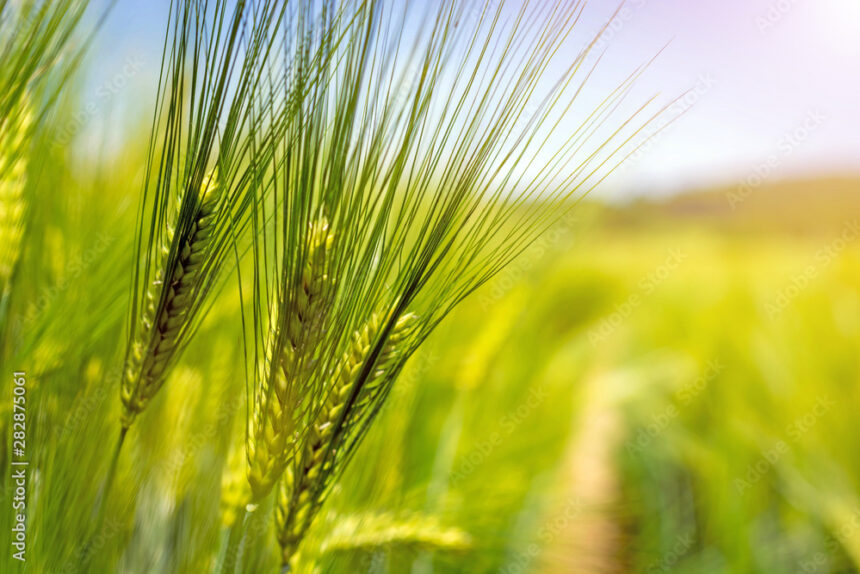Net blotch is a fungal disease that affects barley crops. It can cause significant yield losses if left untreated. Here are some common symptoms of net blotch that you should look out for in barley:
- Leaf Lesions: Net blotch typically starts as small, oval-shaped lesions on the leaves of barley plants. These lesions are initially light brown but may turn dark brown or black as the disease progresses. They often have a distinct net-like pattern, which gives the disease its name.
- Lesion Enlargement: Over time, the lesions may increase in size and merge together, forming larger irregularly shaped patches on the leaves. The centers of the lesions may become grayish or necrotic.
- Yellowing and Necrosis: As the disease progresses, the infected leaves may turn yellow or straw-colored. In severe cases, the leaves may become completely necrotic (dead tissue), leading to premature death of the affected plant parts.
- Blighting of the Flag Leaf: The net blotch infection can spread to the flag leaf, which is the uppermost leaf in the barley plant. Blighting of the flag leaf can significantly impact grain filling and reduce yield.
- Lesions on other Plant Parts: In addition to leaves, net blotch can also cause lesions on barley stems and spikelets. Stem lesions are usually elongated and may result in lodging (the bending or breaking of the stem). Lesions on spikelets can cause poor grain development and lower grain quality.
- Presence of Fungal Fruiting Bodies: In advanced stages of the disease, small black fruiting bodies may develop within the lesions. These fruiting bodies contain fungal spores and can contribute to the spread of the disease.
It’s important to note that the severity of net blotch symptoms can vary depending on the barley variety, environmental conditions, and the specific pathogen involved. If you suspect net blotch in your barley crop, it’s recommended to consult with a local agricultural extension service or a plant pathologist for an accurate diagnosis and appropriate management strategies.
Join 'Farmers Mag' WhatsApp Channel
Get the latest Farming news and tips delivered straight to your WhatsApp
CLICK HERE TO JOIN






